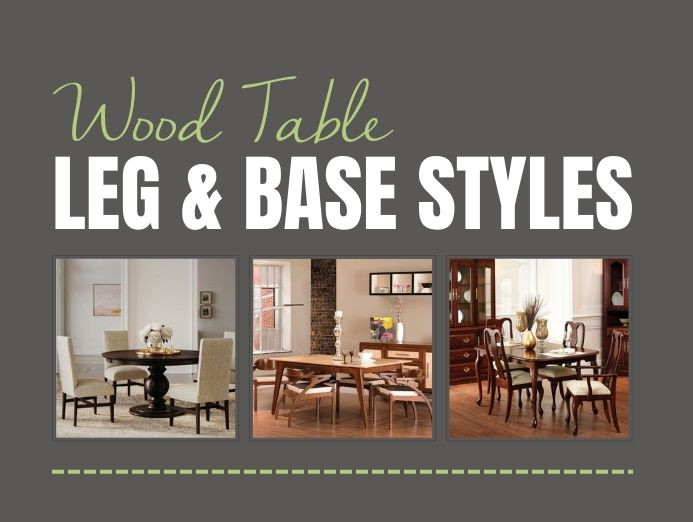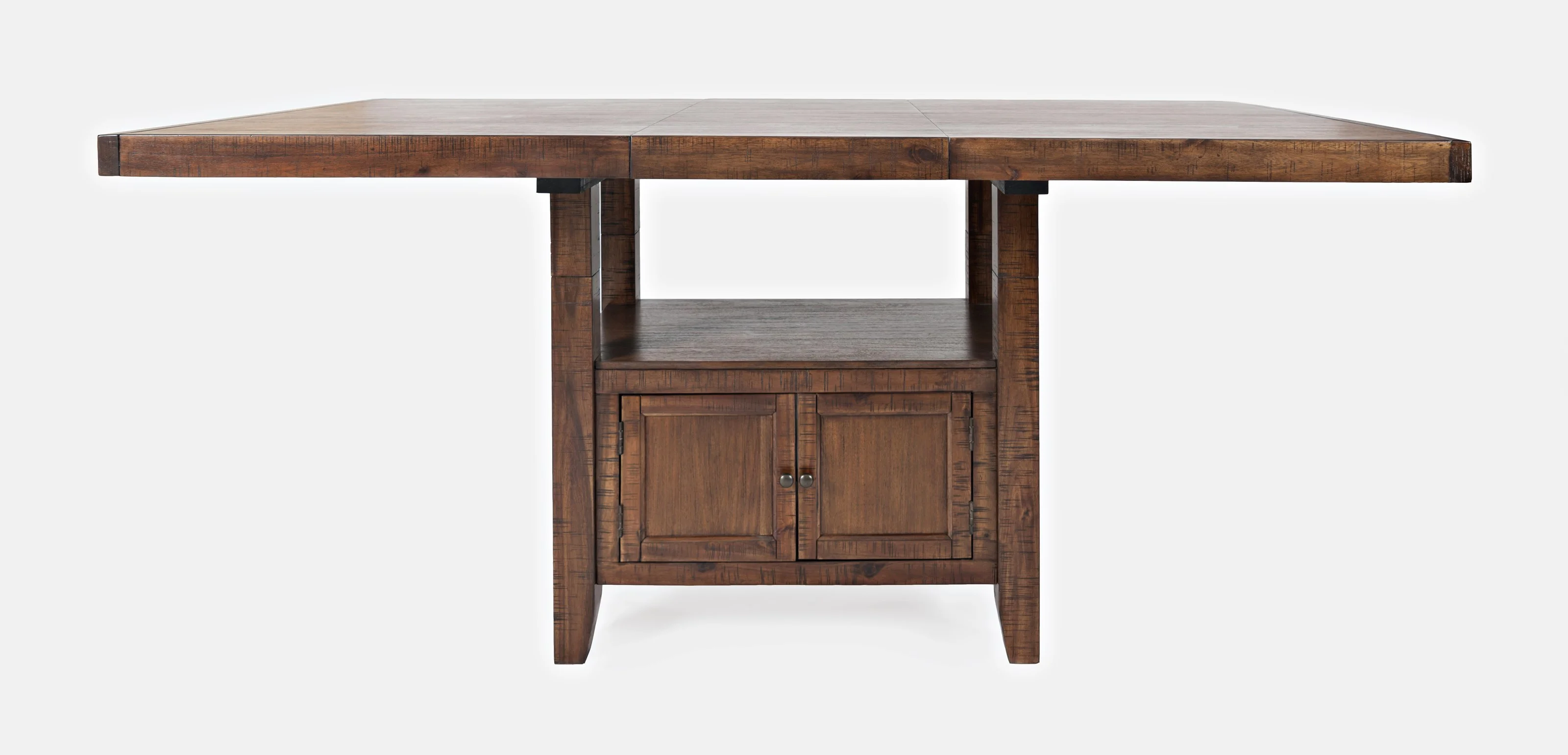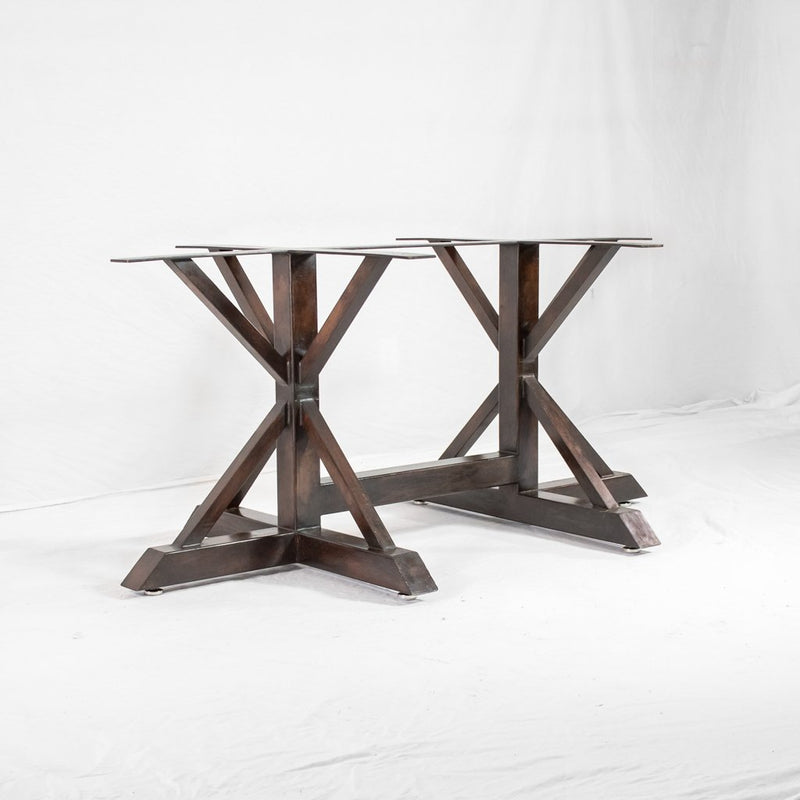Specialist Tips for Installing Dining-room Table Legs for Maximum Security
When it concerns mounting eating room table legs, achieving optimum stability is vital for both performance and aesthetic appeals. The procedure starts with choosing the right materials and hardware, adhered to by precise placement and consideration of weight circulation. Each action plays a vital duty in guaranteeing that the completed item stands up to day-to-day usage without jeopardizing security or design honesty. Nonetheless, understanding the subtleties of these aspects can dramatically influence the general result. What certain methods can improve security also further?
Pick the Right Legs
When selecting the suitable legs for your dining room table, it is vital to take into consideration both capability and aesthetics. The legs you pick will dramatically impact the total design and security of the table. Assess the table's planned use; if you anticipate frequent gatherings, sturdier legs, such as those made from strong wood or steel, may be a lot more suitable, as they use enhanced longevity and assistance.
Following, consider the height and style of the legs in connection with the table top. Conventional table usually range from 28 to 30 inches in elevation, so make sure the legs align with this standard for convenience. The style of the legs should enhance the style of the tabletop-- whether it be modern-day, rustic, or standard. For example, tapered legs can include a contemporary touch, while transformed legs may communicate a much more traditional aesthetic.

Select Appropriate Hardware
How can the appropriate equipment enhance the security and durability of your dining-room table? The choice of ideal hardware is essential to making certain that the legs of your table are safely affixed and able to endure regular usage. High-grade screws, bolts, and braces supply the essential toughness to support the weight of the table, along with any added loads positioned upon it throughout dishes or events.
When selecting screws, go with those made from long lasting materials such as stainless-steel or brass, which withstand rust and keep integrity in time. The length of the screws is equally crucial; they ought to permeate deeply right into the table's structure without endangering stability. For bolted connections, take into consideration using lock washing machines to avoid loosening as a result of vibration or motion.
In addition, using edge braces can add extra support, particularly for larger tables or those with much heavier tops. These braces disperse weight equally and aid keep the table's shape. Making sure that the hardware you select is suitable for the particular products of your table will certainly further boost its general security and long life, permitting you to enjoy your eating experience for several years to come.
Ensure Correct Positioning
Correct positioning of dining space table legs is important for both aesthetic allure and practical stability. To achieve ideal placement, start by gauging the range from the table's corners to the leg add-on factors.
Make use of visit this website a level during setup to verify that each leg is vertical to the tabletop. It is suggested to note the preferred leg settings on the underside of the table with a pencil or masking tape prior to protecting them.
Additionally, double-check the placement after the first screws are tightened up, as modifications may be necessary prior to totally protecting the equipment. By focusing on correct positioning, you not just boost the table's general style however likewise ensure that it stays secure and practical for years to find.

Think About Weight Circulation
After making certain proper placement of the dining-room table legs, it's crucial to take into consideration weight distribution to improve stability and functionality. dining room table legs. Proper weight distribution is critical in protecting against wobbling and making sure that the table can support its desired load without threat of tipping or collapsing
When placing the legs, ensure they go to the website are positioned at equivalent ranges from the facility of the table to uniformly disperse the weight across the structure. Think about the weight of the table top and any things that will frequently hinge on it, such as tabletop home appliances or decorative items. Tables with larger surface areas need to ideally have legs located closer to the edges, as this makes best use of the base of assistance and minimizes the threat of instability.
Furthermore, if the table is planned for use in a high-traffic location, consider making use of larger materials for the legs or including stabilizing elements, such as cross-bracing or a lower shelf - dining room table legs. These modifications can assist keep equilibrium and stop moving during use. Ultimately, a well-considered weight distribution strategy will significantly boost the table's total performance, guaranteeing it remains a attractive official site and useful focal point for your dining room
Test Security Before Use
Examining the stability of the eating area table prior to usage is an important step that ought to not be neglected. If the table reveals instability, identify the legs or joints that might need adjustment.
Following, check that all bolts and screws are tightened up effectively. Loose connections can bring about instability and possible damages in time. If necessary, make use of wood adhesive on joints to boost stability, ensuring to allow adequate drying out time.

Verdict
In verdict, the installment of dining-room table legs needs careful factor to consider of products, weight, hardware, and alignment circulation to attain optimum security. By picking premium fasteners and sturdy legs, ensuring exact positioning, and distributing weight uniformly, the structural honesty of the table can be substantially improved. Performing a security test prior to routine usage even more ensures that the table will certainly withstand everyday stress, therefore supplying a risk-free and reliable dining experience.
When it comes to installing eating area table legs, attaining optimum stability is paramount for both functionality and visual appeals. The legs you choose will considerably influence the total layout and security of the table (dining room table legs). Common eating tables normally vary from 28 to 30 inches in height, so make certain the legs align with this requirement for convenience.Proper positioning of eating area table legs is essential for both visual allure and practical stability.In conclusion, the installment of dining room table legs calls for cautious consideration of materials, equipment, positioning, and weight circulation to accomplish optimum security